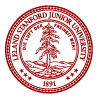The GRIP MAESTRO: Balancing Large- and Small-scale Aspects of Emotive Gestural Control for Live Electroacoustic Musical Performance
| Title | The GRIP MAESTRO: Balancing Large- and Small-scale Aspects of Emotive Gestural Control for Live Electroacoustic Musical Performance |
| Publication Type | Conference Paper |
| Year of Publication | 2010 |
| Authors | Berger, M. |
| Conference Name | Hawaii International Conference on the Arts and Humanities |
| Conference Location | Honolulu, Hawaii, USA |
| Keywords | Accellerometer, ChucK, GRIP MAESTRO, Human Computer Interface, Physical Interactive Design |
| Abstract | The goal of this research is to explore the interrelationships that exist between performative human gestures and musical sound by developing effective and idiomatic software mappings for the GRIP MAESTRO electroacoustic music performance interface. In the spring of 2008 I created the GRIP MAESTRO as part of my ongoing research in physical interactive design at Stanford University’s Center for Computer Research in Music and Acoustics (C.C.R.M.A.). Unlike many such interfaces that are designed with a specific sound or sonic metaphor in mind, the GRIP MAESTRO was built to take advantage of a specific physical gesture for its emotive potential, with little forethought given to the sounds it would eventually produce. The specific gesture of which I am speaking is that of gripping, of squeezing with the entire hand or with individual fingers. This gesture is one that is frequently underutilized in musical performance. The hand may be used to depress keys or strings, but never is the full range of motion taken advantage of as it is with the GRIP MAESTRO. The interface couples this familiar yet nuanced gesture with built-in physical resistance to allow the performer to feel his performance in the same way he would on an acoustic instrument. Since the GRIP MAESTRO is modeled after a gesture and not after a desired sound (or existing method of sound production), finding/developing a musical sound that works idiomatically for the instrument is the fundamental challenge it poses. An ideal software mapping will produce sounds that, to an observer and to the performer, seem to come naturally from the device and the gestures its performance requires. This is not to say that there may be only one perfect mapping for the GRIP MAESTRO, on the contrary, the multidimensionality of the challenge ensures the possibility of many such ideals. It is therefore this wealth of options that is simultaneously the instrument’s best strength and its biggest potential hindrance. In its current incarnation the GRIP MAESTRO consists of two modified hand exercisers, held one in each hand, connected via a microcontroller board to a computer where the information sent by the device’s sensors is interpreted and converted into sound. Each GRIP MAESTRO hand-unit has four independent spring-loaded finger pads and a single three-spring palm pad. Attached near each spring is a small yet powerful magnet opposite a Hall Effect sensor. The data that each sensor sends out is directly related to its distance from its corresponding magnet, and thereby indicates the amount that each pad is depressed. The palm pad has two sensor/magnet pairs so that its ‘tilt’ maybe calculated by the computer; that is the angle of the palm rest relative to the rest of the unit. New to this most recent version of the instrument, each unit is now also equipped with an accelerometer which detects its orientation to gravity and relative motion in three-dimensional space. When one compares the sensor readings from one unit against those of the other, one is able to extrapolate even larger pieces of performance information. The range of gestural motion that the GRIP MAESTRO is able to detect is extremely wide; from the subtlest twitch of a single finger to the wildest most dramatic swing of the arms. The challenge of mapping this gesturally-derived information naturally onto meaningful musical sounds becomes one of balancing not only the large- and small-scale aspects of the gestures themselves, but also the gestural information with those similarly varied aspects of musical sound (i.e. large-scale musical aspects such as phrase and melody, and small-scale aspects such as pitch, vibrato, and timbre). Since the accelerometer-based motion-sensing and two-handed aspects of the GRIP MAESTRO are relatively recent additions to the design, few of my software mappings thus far have utilized them to their fullest potentials. It is in this area of the project that the most fruitful and exciting work is yet to be done. Already the GRIP MAESTRO has generated creative interest for members of the Stanford Laptop Orchestra, as well as for researchers in methods of physical recovery for stroke victims. For my poster session at the Hawaii International Conference on Arts and Humanities I will present the work that I have completed so far together with that which has yet to be done. In the coming months I will develop several more software mappings for the device and compose a set of etudes through which they may be showcased. The GRIP MAESTRO is literally a hands-on experience and interactivity is at the core of its being, it is for these reasons that a poster session is the ideal setting in which to demonstrate the device. |

